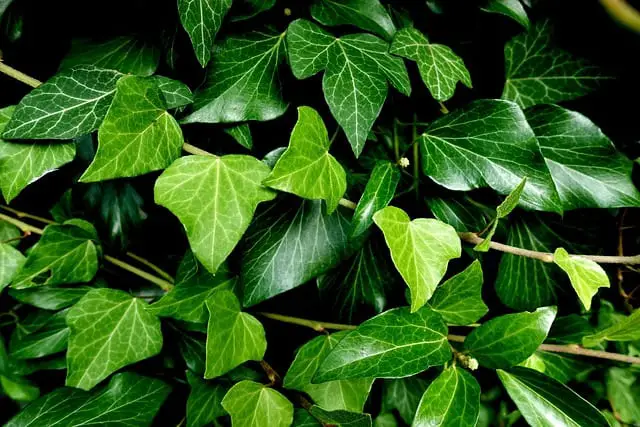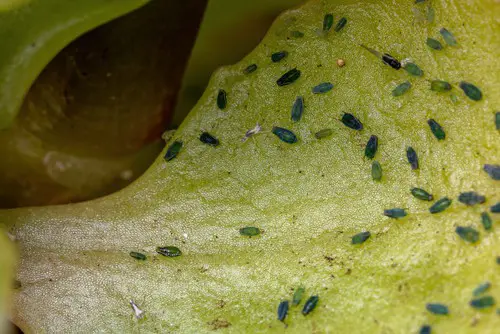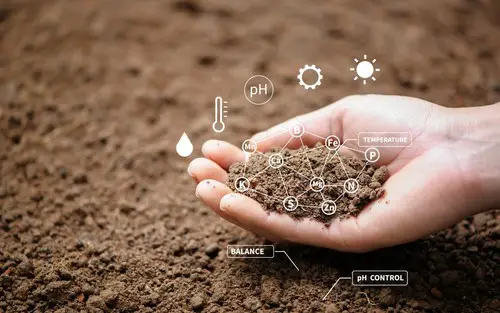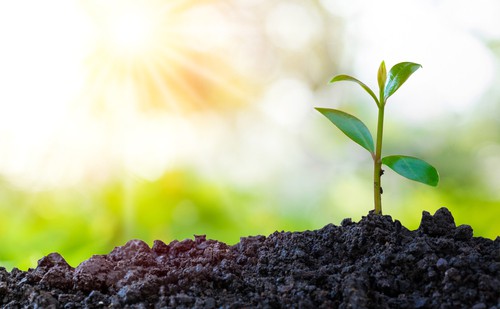Ivy plants are a popular choice for indoor and outdoor gardening, thanks to their lush foliage and easy maintenance. However, sometimes even the best gardeners can struggle to keep their ivy plants healthy.
If you’ve noticed that your ivy plant is looking a little worse for wear, don’t worry – there are steps you can take to revive it and get it back to its former glory.
The first step in saving a dying ivy plant is to identify the problem. This could be anything from overwatering to lack of sunlight, so it’s important to take a close look at your plant and try to determine what’s causing the issue.
Once you’ve identified the problem, you can take steps to address it and start nursing your ivy plant back to health.
In this article, we’ll take a closer look at how to save a dying ivy plant. We’ll explore some of the most common causes of ivy plant decline, as well as some practical tips and tricks for getting your plant back on track.
Whether you’re a seasoned gardener or a complete novice, we’re confident that these tips will help you save your struggling ivy plant.
Key Takeaways
- Identifying the cause of a dying ivy plant is crucial to reviving it.
- Proper watering, lighting, and soil conditions are essential for maintaining healthy ivy plants.
- Regular maintenance and preventative measures can help keep your ivy plant thriving for years to come.
Also see:
- How to Save a Dying Hibiscus Plant
- How to Save a Dying Dracaena Plant
- How to Save a Dying Elephant Ear Plant
Identifying a Dying Ivy Plant

Ivy plants are popular houseplants, but they can be tricky to care for. If you notice your ivy plant is looking a little worse for wear, it may be dying. Here are some signs to look out for:
- Yellowing leaves: If your ivy plant’s leaves are turning yellow, it’s a sign that something is wrong. This could be due to overwatering, underwatering, or a lack of nutrients.
- Brown leaves: Brown leaves are a sign that your ivy plant is not getting enough water. This could be due to underwatering or poor drainage.
- Wilting: If your ivy plant’s leaves are wilting, it’s a sign that it’s not getting enough water. This could be due to underwatering or poor drainage.
- Dying plant: If your ivy plant is dying, it’s a sign that it’s not getting the care it needs. This could be due to a lack of water, nutrients, or light.
It’s important to note that not all yellowing or brown leaves mean your ivy plant is dying. Sometimes, it’s just a natural part of the plant’s growth cycle. However, if you notice several of these signs together, it’s likely that your ivy plant is in trouble.
To determine if your ivy plant is truly dying, look for signs of life. Check the stems and leaves for any new growth or signs of green. If you don’t see any, it’s a sign that your plant may not be salvageable.
Understanding the Causes of a Dying Ivy Plant
When it comes to saving a dying ivy plant, it’s important to understand the root cause of the problem. There are several factors that can contribute to an ivy plant’s decline, including overwatering, underwatering, pest infestations, inadequate light conditions, temperature and humidity factors, and soil and root conditions.
1. Overwatering and Underwatering
Overwatering and underwatering are two of the most common causes of a dying ivy plant. Overwatering can lead to root rot, which can cause the plant to wilt, turn brown, and eventually die. Underwatering can cause the plant to dry out and become brittle.
To avoid overwatering, it’s important to ensure that the soil has good drainage and that the plant is not sitting in standing water. To avoid underwatering, it’s important to water the plant regularly and to make sure that the soil is moist but not waterlogged.
2. Pest Infestations

Pest infestations can also contribute to a dying ivy plant. Common pests that can affect ivy plants include mites, mealybugs, and spider mites. These pests can cause the leaves to turn yellow or brown and can eventually cause the plant to die.
To prevent pest infestations, it’s important to keep the plant clean and free of debris. Regularly inspect the plant for signs of infestation and take action immediately if you notice any pests.
3. Inadequate Light Conditions
Ivy plants require adequate light to thrive. If the plant is not getting enough light, it can become weak and eventually die. On the other hand, if the plant is getting too much direct sunlight, it can become burned and damaged.
To ensure that the plant is getting the right amount of light, it’s important to position it in a spot that receives medium to bright indirect light. Avoid placing the plant in direct sunlight, especially during the summer months.
4. Temperature and Humidity Factors
Temperature and humidity can also play a role in the health of an ivy plant. High temperatures can cause the plant to wilt and become weak, while low temperatures can cause the leaves to turn brown and fall off. In addition, ivy plants require a certain level of humidity to thrive.
To ensure that the plant is in an optimal environment, it’s important to keep it in an area with a consistent temperature and humidity level. Avoid placing the plant near drafty windows or in areas with extreme temperature fluctuations.
5. Soil and Root Conditions
Finally, soil and root conditions can also contribute to a dying ivy plant. Ivy plants require well-draining soil and healthy roots to thrive. If the soil is too moist or if the roots are damaged, the plant can become weak and eventually die.
To ensure that the plant has healthy soil and roots, it’s important to use well-draining soil and to avoid overwatering. In addition, it’s important to regularly inspect the plant for signs of root rot and to take action immediately if you notice any issues.
By understanding the causes of a dying ivy plant, you can take the necessary steps to save your plant and help it thrive.
Reviving a Dying Ivy Plant

Ivy plants are a popular choice for indoor and outdoor decoration due to their lush foliage and easy maintenance. However, even with the best care, ivy plants can still experience problems such as yellowing leaves, stunted growth, and pest infestations. If your ivy plant is dying, don’t worry, there are several things you can do to revive it.
1. Correct Watering Techniques
One of the most common reasons for a dying ivy plant is incorrect watering techniques. Overwatering can lead to root rot, while underwatering can cause the leaves to wilt and turn brown. To revive a dying ivy plant, it’s important to water it appropriately.
The amount of water your ivy plant needs depends on several factors, such as the size of the pot, the type of soil, and the amount of sunlight it receives. As a general rule, water your ivy plant when the top inch of soil feels dry to the touch.
It’s also important to use the correct watering schedule. Ivy plants prefer moist soil but not waterlogged soil. Water your ivy plant deeply once a week, rather than giving it frequent shallow waterings. This will encourage the roots to grow deep and strong.
2. Pest Control Methods
Pest infestations can also cause a dying ivy plant. Common pests that affect ivy plants include spider mites, mealybugs, and scale insects. To revive a dying ivy plant, it’s important to identify and treat any pest infestations.
One effective pest control method is to use neem oil. Neem oil is a natural insecticide that can kill a wide range of pests without harming the plant. To use neem oil, dilute it with water according to the instructions on the label and spray it on the affected areas of the plant.
3. Optimizing Light and Temperature
Ivy plants require bright, indirect light to photosynthesize and grow properly. If your ivy plant is not receiving enough light, it can become weak and susceptible to pest infestations.
To optimize light and temperature, place your ivy plant in a bright, indirect light source. If your ivy plant is not receiving enough light, consider using a grow light to supplement its light requirements.
Ivy plants also prefer moderate temperatures between 60-75°F. Avoid placing your ivy plant in areas with extreme temperatures, such as near air conditioning units or heating vents.
4. Improving Soil and Root Health

Finally, to revive a dying ivy plant, it’s important to improve its soil and root health. Over time, the soil in your ivy plant’s pot can become compacted, which can prevent water and nutrients from reaching the roots.
To improve soil and root health, consider repotting your ivy plant in fresh potting soil. When repotting, add stones or gravel to the bottom of the pot to improve drainage.
It’s also important to fertilize your ivy plant regularly. Use a balanced fertilizer once a month during the growing season to provide your ivy plant with the nutrients it needs to grow strong and healthy.
By following these tips, you can revive a dying ivy plant and enjoy its lush foliage for years to come.
Maintaining Healthy Ivy Plants
Keeping ivy plants healthy is crucial to prevent them from dying. Regular pruning, appropriate fertilizing, and periodic repotting are essential for maintaining healthy ivy plants.
1. Regular Pruning
Pruning is necessary to promote new growth and maintain the shape of the plant. Ivy plants should be pruned regularly to remove any dead or yellowing leaves and to prevent the plant from becoming too leggy. Pruning also helps to control the size of the plant, making it easier to manage.
To prune an ivy plant, use clean and sharp pruning shears. Cut back the stems to just above a leaf node, leaving at least two leaves on the stem. This will encourage new growth and prevent the plant from becoming too bare.
2. Appropriate Fertilizing
Fertilizing is essential to provide the necessary nutrients for the plant to grow and thrive. Ivy plants should be fertilized every two to three months during the growing season (spring and summer) with a balanced fertilizer.
It is important not to over-fertilize, as this can cause the plant to become pot-bound and stunt its growth. Use a slow-release fertilizer or a liquid fertilizer at half-strength to avoid over-fertilization.
3. Periodic Repotting
Repotting is necessary to prevent ivy plants from becoming pot-bound and to provide them with fresh soil and nutrients. Ivy plants should be repotted every two to three years, or when the plant has outgrown its current pot.
To repot an ivy plant, gently remove it from its current pot and loosen the roots. Place the plant in a new pot with fresh soil and water thoroughly.
By regularly pruning, appropriately fertilizing, and periodically repotting ivy plants, they can be kept healthy and prevent them from dying. These tips can also be applied to other houseplants, succulents, and indoor plants to keep them healthy and thriving.
Preventing Future Issues

To prevent a dying ivy plant from happening again, there are a few things that can be done. Monitoring the watering schedule, keeping an eye on lighting, watching for pests, and checking soil and roots regularly can all help prevent future issues.
1. Monitoring Watering Schedule
One of the most common reasons for a dying ivy plant is incorrect watering. It is important to water ivy plants correctly to keep them healthy. Overwatering or underwatering can cause problems.
A good rule of thumb is to water when the top inch of soil feels dry to the touch. It is also important to ensure proper drainage by using a pot with drainage holes.
2. Keeping an Eye on Lighting
Ivy plants require moderate to bright light to thrive. If the plant is not getting enough light, it may become weak and susceptible to diseases. On the other hand, too much direct sunlight can scorch the leaves. It is important to find the right balance of light for the plant to stay healthy.
3. Watching for Pests
Pests can be a major problem for ivy plants. Spider mites, mealybugs, and scale insects are common pests that can cause damage to the plant. Keeping a close eye on the plant and regularly inspecting for pests can help prevent infestations. If pests are found, there are natural and chemical treatments available to get rid of them.
4. Checking Soil and Roots Regularly
Checking the soil and roots regularly can help prevent future issues with a dying ivy plant. Ivy plants prefer well-draining soil that is slightly acidic. If the soil is too compacted or the roots are crowded, it can cause problems for the plant. It is important to repot the plant in a larger container if the roots are crowded.
Conclusion

One of the most important gardening tips for saving a dying ivy plant is to ensure that it receives enough water. Ivy plants require a generous soak around once per week to stay healthy, but gardeners may need to increase the frequency of watering depending on their conditions.
Dry soil is a common cause of a dying ivy plant with leaves turning brown.
Another factor to consider is the amount of light the plant receives. Ivy plants do best when positioned in medium light, but some can do well in bright light settings as well. Gardeners should ensure that their ivy plant is not in direct sunlight, as this can cause scorching on the leaves.
Humidity is also an important factor to consider when trying to save a dying ivy plant. Most ivies tolerate the humidity level in a typical home, but they will grow more vigorously and resist pest infestations if grown in moderate to high humidity. Using a humidifier can help to increase the humidity levels around the plant.
Frequently Asked Questions
How do I identify if my ivy plant is dying?
There are a few signs that your ivy plant may be dying. Look for wilted or yellow leaves, dry or brittle stems, and a lack of new growth. If the leaves are falling off, it could also be a sign of a dying ivy plant.
What are some common causes of ivy plants dying?
Improper watering, too much or too little light, poor soil quality, pests, and diseases are all common causes of ivy plants dying.
What are some signs of a dying ivy plant?
Signs of a dying ivy plant include yellow or wilted leaves, dry or brittle stems, a lack of new growth, and leaves falling off.
What steps can I take to revive a dying ivy plant?
To revive a dying ivy plant, start by examining the roots for signs of root rot and transplanting it to a pot with fresh soil. Provide the plant with adequate light, water, and humidity, and remove any dead or damaged leaves and stems.
Fertilize the plant regularly and keep an eye out for pests and diseases.
How often should I water my ivy plant to prevent it from dying?
Ivy plants prefer moist soil, but overwatering can lead to root rot. Water your ivy plant when the top inch of soil feels dry to the touch. The frequency of watering will depend on factors such as the size of the pot, the type of soil, and the humidity levels in your home.
Can trimming dead leaves and branches help save a dying ivy plant?
Yes, trimming dead leaves and branches can help save a dying ivy plant. This will allow the plant to focus its energy on new growth and prevent the spread of disease. Use clean, sharp pruning shears to make clean cuts and avoid damaging the healthy parts of the plant.

Hey, I’m Lisa and I’ve been an avid gardener for over 30 years. I love writing, talking and living in the garden! Feel free to connect with me on my socials below


